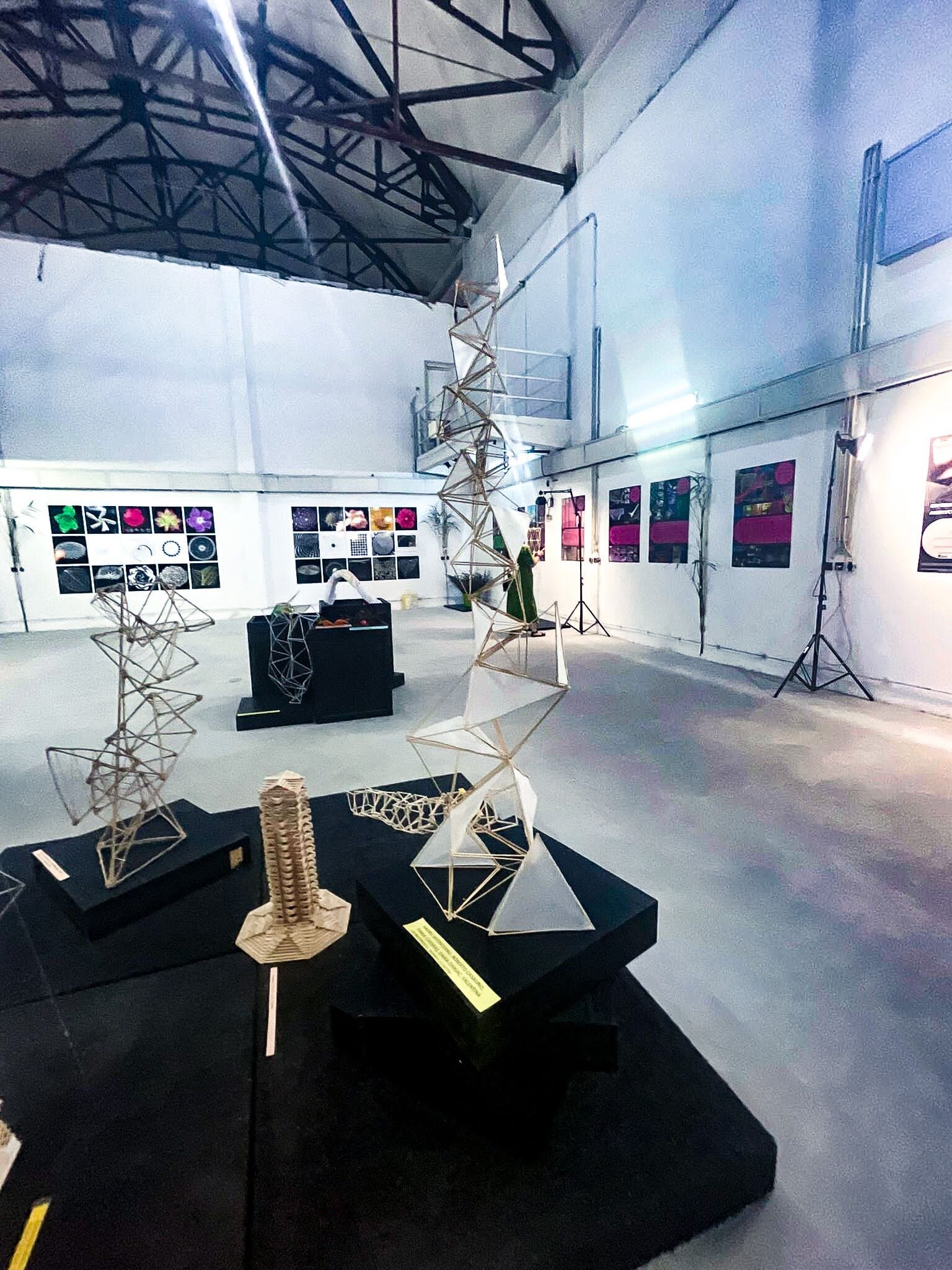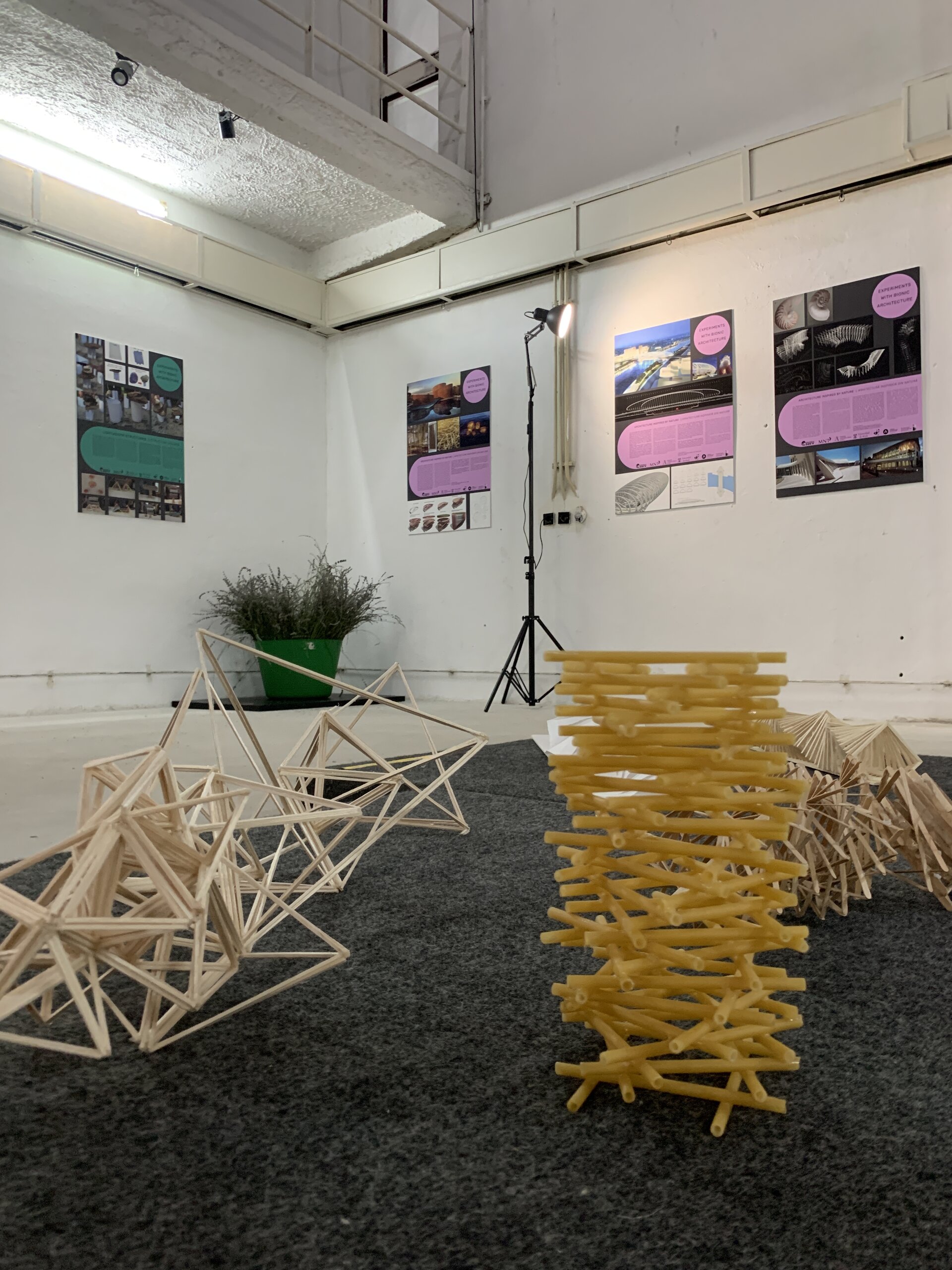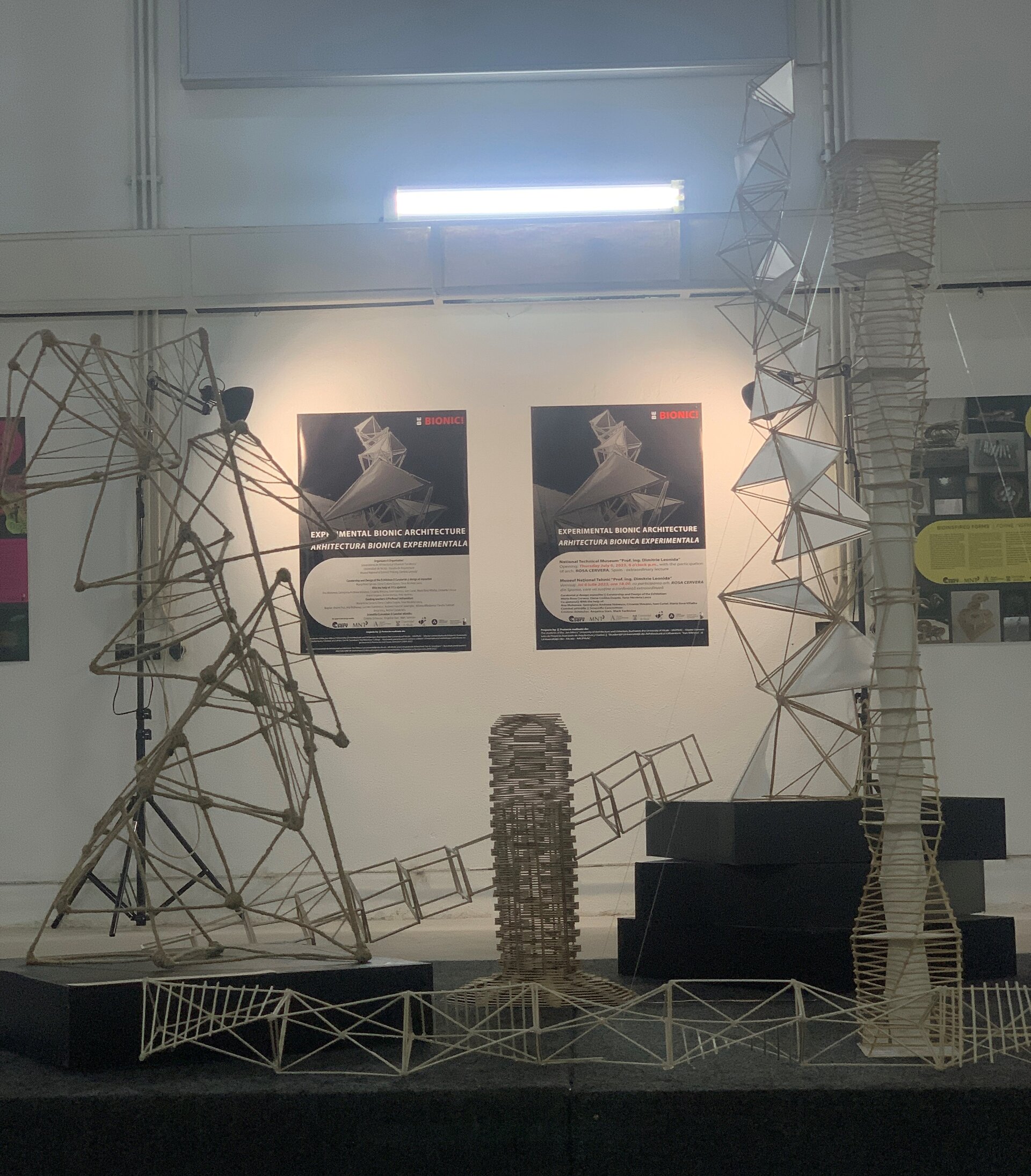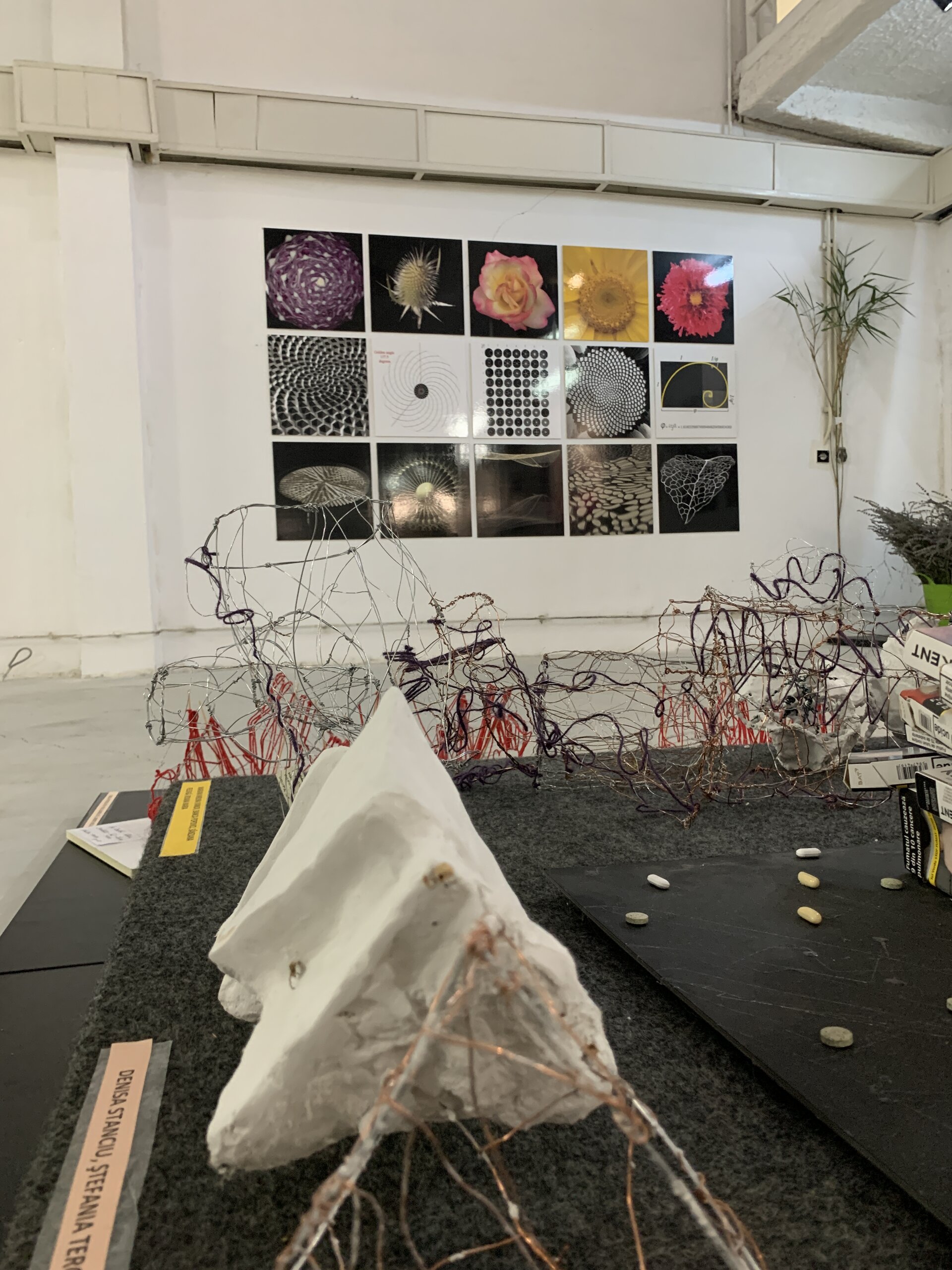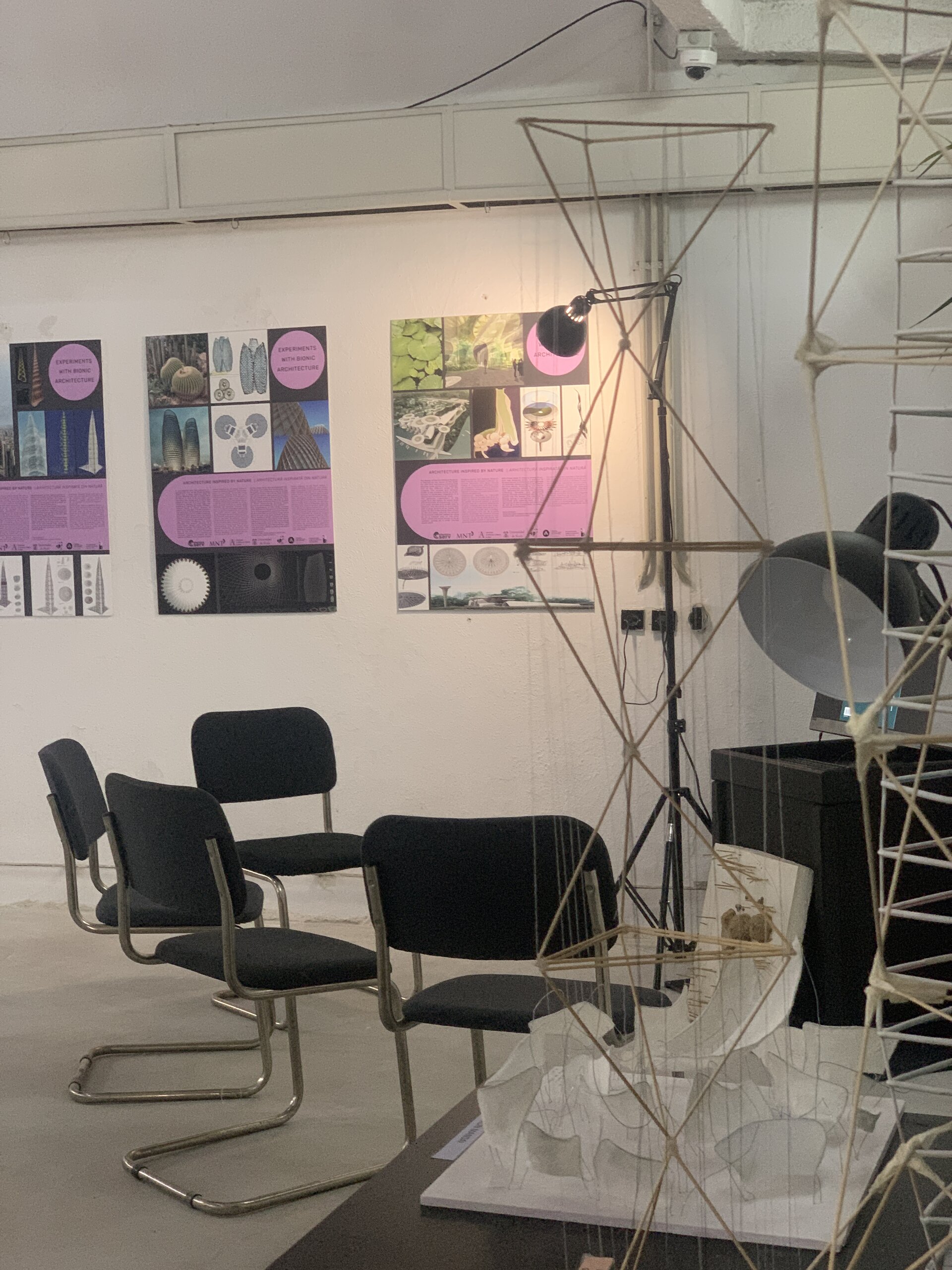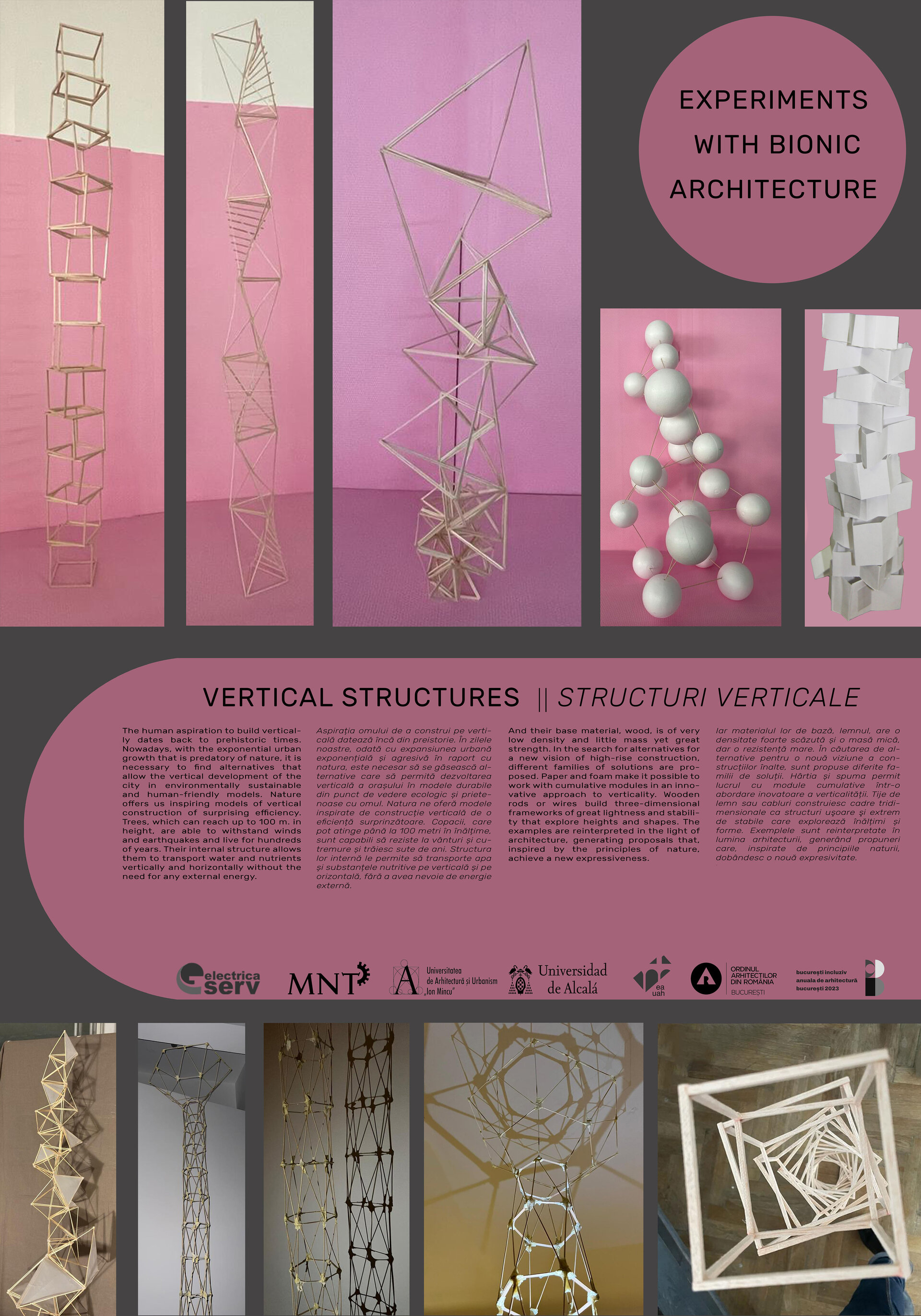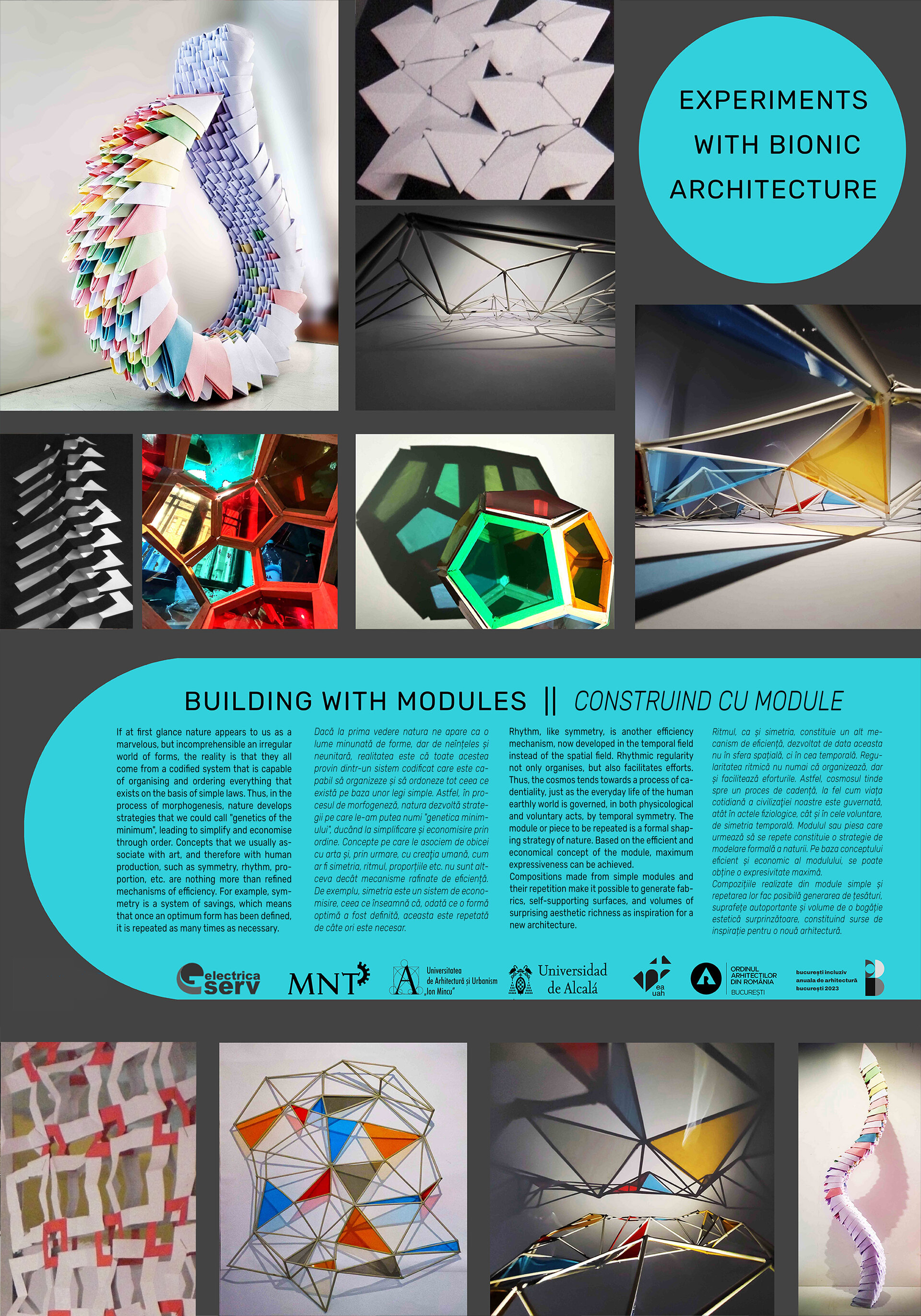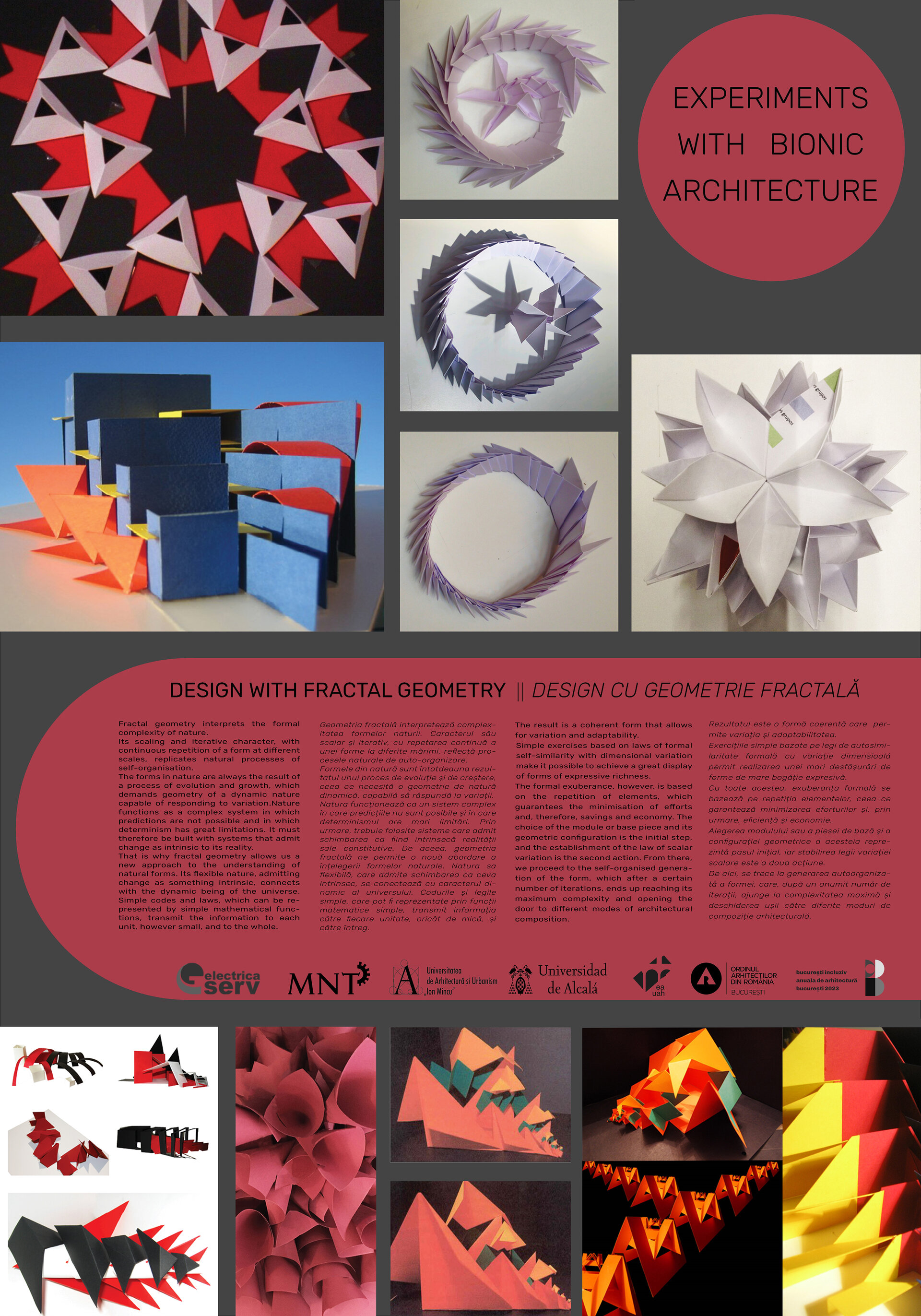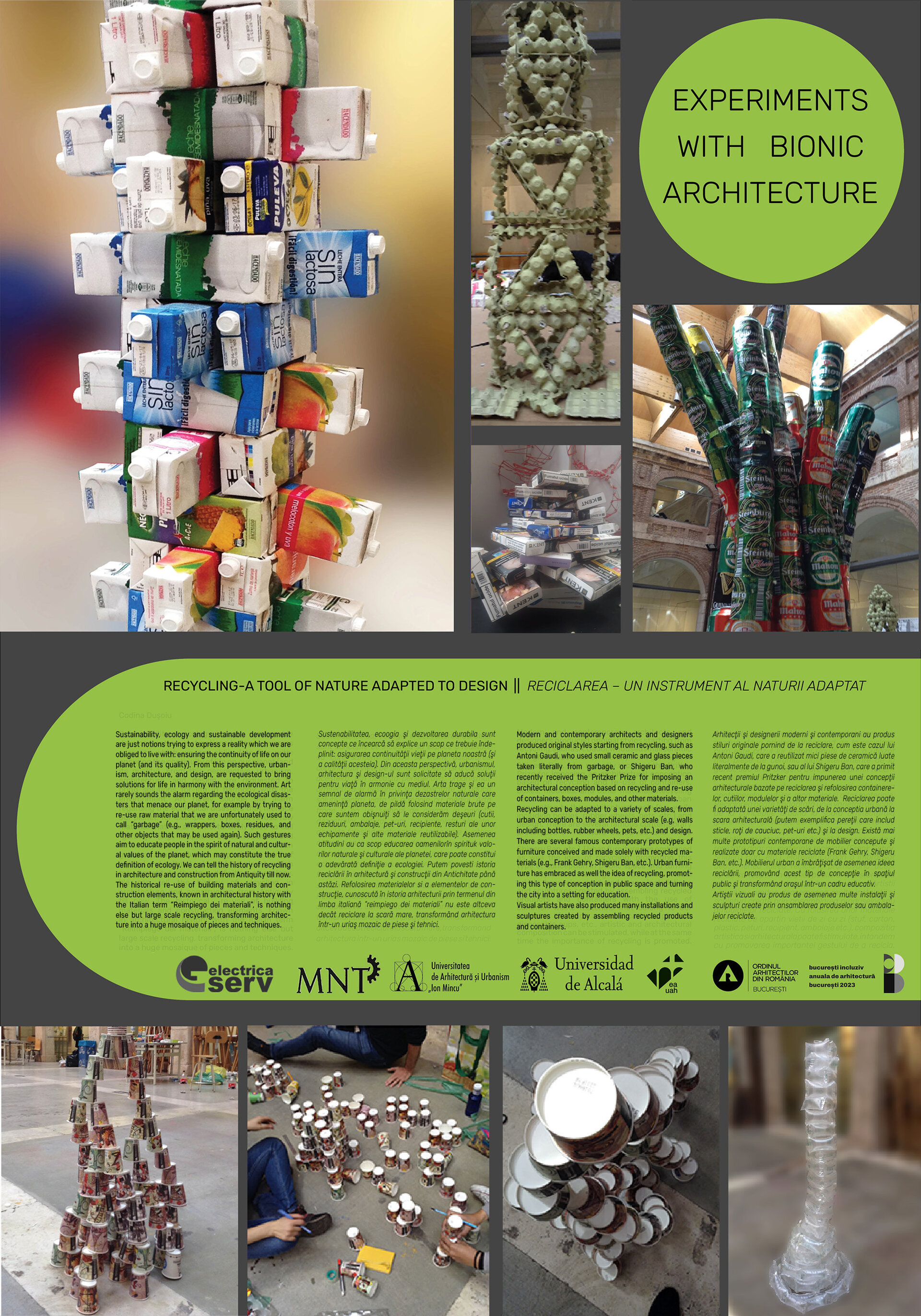
Be Bionic! Experimental Bionic Architecture
Authors’ Comment
Bionics is the science that studies deeply the biological systems in order to obtain knowledge that is useful for the human being. It is an interdisciplinary research field, dealing with the study of technical solutions discovered by nature through evolution and their application in technique and innovative technology. Architecture approached as well the field of bionics in time, discovering the outstanding potential of applying its laws while building constructions that can be interpreted, in fact, as living organisms. The architect Rosa Cervera was a pioneer in practising this type of approach which she applied since the end of the XXth century-beginning of 2000. Starting with 2009, María Rosa Cervera Sardá was constantly a guest of the „Ion Mincu” University of Architecture and Urban Planning from Bucharest. As an effect, international seminaries and workshops dedicated to applying bionics in architecture were organized were organized within the Alcalá de Henares University in 2011, 2012, 2017, 2018, 2019, 2020 and the „Ion Mincu” University of Architecture and Urban Planning in 2009, 2010, 2014, 2017, 2019, 2022, with the participation of numerous professors, specialists, Ph.D.candidates, students and even pupils of the Technical Architecture College „Ion N.Socolescu”. The projects presented in the exhibition are classified in eight cathegories, offering eight possible investigation methods resulted from the deep understanding of natural principles and laws: vertical structures (the attempt to obtain the tallest structure possible starting with the most reduced basis), forms inspired in nature (by applying natural morphology, the dynamics of natural structures and laws of cohesion between particles of the living tissues), fluid topological compositions, applications of fractal geometry (translated in nature by growing laws), constructions realized with modules, recyclying and self-healing structures, the study of various possiblilities of light perception, wide light structures. For a clearer understanding of the eight mentioned principles, they are presented in different colors.
- After Sculpture - Sculpture After
- RDW 2022 - Courtyard Design of Combinatul Fondului Plastic - Pretty Heap
- Pastoral Calendar
- Reflections of Queen Mary in Cotroceni Palace
- All balloons up high! - Architect’s Stand
- PORC Rap-Up Store
- VL_SD
- Isolation in a Series of Liminal States 2023
- The Little Magenta Rinding Hood
- Be Bionic! Experimental Bionic Architecture
- Volume of a sleep
- BoxIT !
- 1907. We ask for land
- Diploma Show 2023
- Inventory of the Week
- Nostalgia with a twist
- CORPUS CONFECTUS
- Victor Brauner - Inventions and magic
- Individual All-around
- Romanian Design Week 2023
- Innovation




